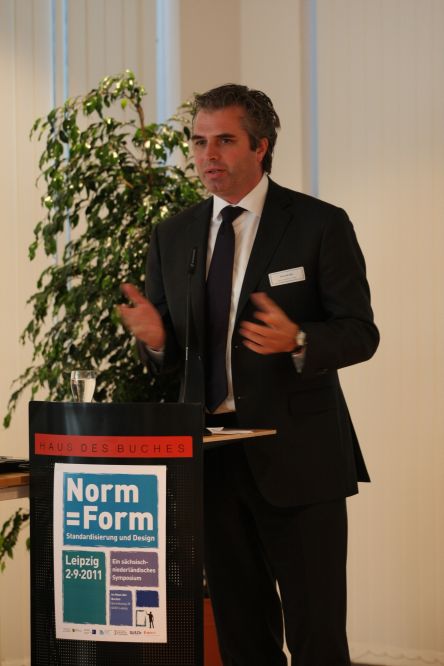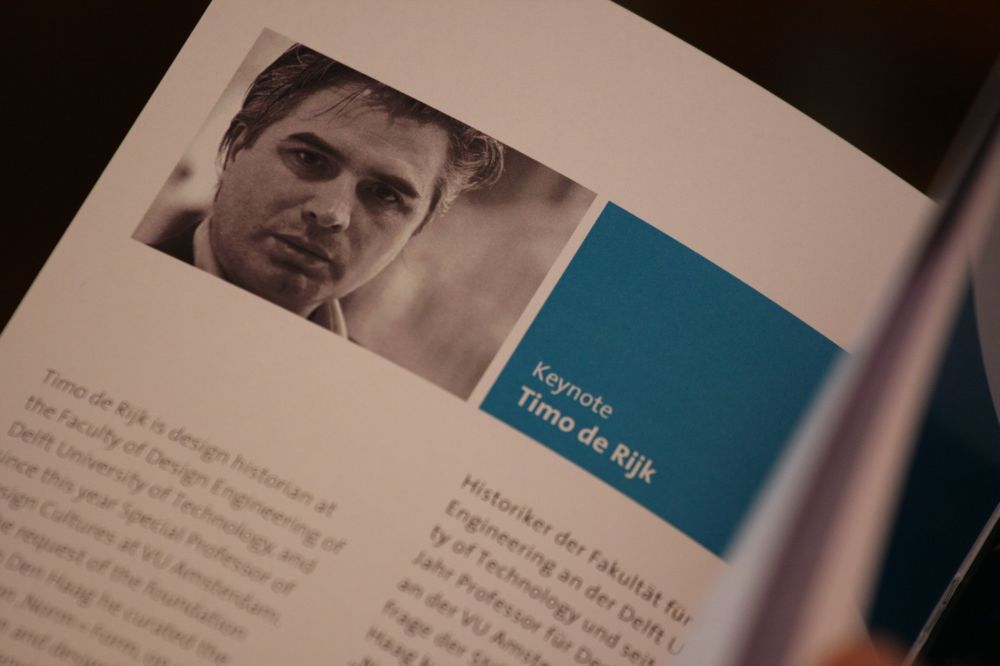
Keynote speaker at the Norm=Form Symposium that took place in Leipzig in early September was the Dutch design historian Timo de Rijk. Timo also curated the exhibition Norm=Form, and co-edited the accompanying book.
In the course of a highly entertaining and thought provoking speech Timo tracked the story of standardisation over the centuries and presented his opinions on why we have standards. Including a hilarious comparison between the Chinese Communist Party and industrial designers.
After his speech we caught up with Timo de Rijk, to discuss some of the themes raised in a little more detail.
(smow)blog: If we understood correctly, for you, historically, the driving factor behind standardisation was social and cultural changes. Is that still the case today? Or do economic factors play a bigger role?
Timo de Rijk: Obviously standardisation is used as an economic and technical tool in factories - if you standardise products you can produce more, cheaper. But for me you can only establish a product when there is a certain urgency, the product has to have a meaning. And that is the moment when a standard is created.
(smow)blog: Which means that that those products or solutions which establish themselves best, become the standard? We're thinking here about video or jpgs...
Timo de Rijk: jpg is a good example. In a technical sense it's lousy, and all engineers ask how such a format could have become so popular? But engineers think in one way, namely a technical way. But other people think in other ways and want things that are maybe more attractive or more convenient. Which is why we use jpgs. But not just jpgs. For me it is an extreme coincidence that the Levi 501 became popular. It could have been any number of models, but Levi were in the right place at the right time with the right material.
(smow)blog: And so which role do Norms and standards play in modern product design? How have they changed product design?
Timo de Rijk: I think that designers today are much more aware than those of forty or fifty years ago that the social and cultural meaning of a product is of the highest importance. Designers today ar very aware of the place of products in society. They have to be, that's their job.
(smow)blog: And is this this social acceptance that you discussed in your presentation? For example, an office chair has to be ergonomic, or else it can't succeed?
Timo de Rijk: Yes, but I think it is even more than that. Do you work in an office?
(smow)blog: Yes
Timo de Rijk: And what do you want from it?
(smow)blog: A bit of piece an quiet so that we can work....
Timo de Rijk: OK, but you aren't just employees, your also people. An office doesn't have to look like a home, but should be a place of social safety and comfort. And so if your office chair is OK and the rest of the office furnishings are hideous, or if the chair sits OK but looks awful and takes up the space of an elephant. That's not going to make you feel good and so your not happy and don't work so well.
(smow)blog: You also spoke today about how for you a lot of modern products are based on historical standards. And so does that mean, by extrapolation, that standards limit creativity?
Timo de Rijk: It is very difficult to break with conventions; not least because your audience expects the conventions. And so as a designer you are always limited. But you've got to be aware of your limitations to be able to play with them. If as a designer your not aware of your limitations - your going to fail. If you are aware of them and try to change them, in a subtle and intelligent way, you might just succeed.
(smow)blog: At the start of your talk you mentioned disposable razor blades, and at the end you came to apple and iTunes. Can one say that the iTunes store is the disposable razor blade of the 21st century?
Timo de Rijk: I wouldn't like to call a song disposable, but I certainly see a strong connection between manufactures who are aware that their product has more value if there is something attached to it, for instance if you buy a new car. A car is designed such that you always have to go back to the place where you bought it to get the garage to fix things. There is, for example, a lot of electronics in modern cars that you can't fix yourself. And so a car is designed to sell services after the sale.
(smow)blog: Which we guess brings us to what you are doing in Delft, "Beyond design"; looking at such situations rather than pure products per se.
Timo de Rijk: Exactly, imagine a car that doesn't fall apart, but needs to be serviced regularly. That is a product that creates jobs, creates revenue: but doesn't need to be replaced, so we use less steel. That's the sort of thing we're discussing at Delft. And if we can achieve such that could be important for society in terms of sustainability and social stability.
